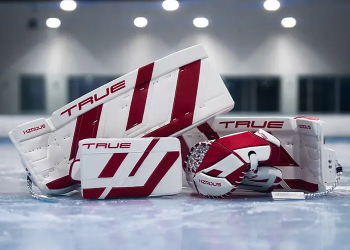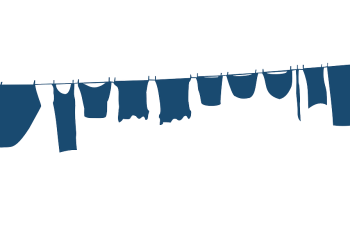Monochromatic outfits, characterized by the use of a single color or its varying shades, have become a timeless fashion statement. They offer simplicity, elegance, and versatility, making them a staple in both casual and formal wardrobes. Styling monochromatic looks might seem straightforward, but achieving a cohesive and eye-catching outfit requires a keen understanding of color, texture, and proportion. Here’s how to make monochromatic dressing your signature style.
Understanding the Appeal of Monochromatic Dressing
The beauty of monochromatic outfits lies in their ability to create a polished and harmonious appearance. By focusing on one color family, you can elongate your silhouette and make a bold yet understated statement. Monochrome dressing transcends trends, making it a reliable choice for any occasion. Whether it’s an all-black power look or a soft pastel ensemble, the effect is universally flattering.
Choosing the Right Base Color
The key to a successful monochromatic outfit starts with selecting the right base color. Consider the following factors:
- Skin Tone: Cool tones like blue, gray, or lavender complement cooler skin undertones, while warm shades like beige, camel, and rust suit warmer skin tones.
- Occasion: Neutral colors such as black, white, and navy work well for formal settings, while vibrant hues like red, emerald, or fuchsia are perfect for making a statement at social events.
- Season: Pastels and light colors are ideal for spring and summer, while darker, richer tones are more suited for fall and winter.
Mixing Textures to Add Depth
A monochromatic look doesn’t have to be one-dimensional. The secret to making your outfit visually interesting is incorporating a variety of textures. For example:
- Pair a silk blouse with wool trousers for a luxurious contrast.
- Add a leather jacket to a cotton dress to infuse edginess.
- Combine matte and glossy fabrics, such as a satin skirt with a knit sweater.
Mixing textures ensures your outfit feels dynamic and layered, even when it revolves around a single color palette.
Playing with Shades and Tones
Monochromatic dressing doesn’t mean sticking to one shade of a color. Exploring gradients within a single hue can make your ensemble stand out. For instance:
- Pair light and dark tones of the same color, such as a pale blue shirt with navy pants.
- Experiment with subtle variations, like mixing blush pink with dusty rose.
- Use accessories in slightly different tones to tie the look together.
By mastering tonal variety, you can achieve a balanced outfit that feels cohesive rather than monotonous.
Accessorizing Monochromatic Looks
Accessories are a powerful tool to elevate monochromatic outfits. Here’s how to use them effectively:
- Statement Pieces: Bold accessories like oversized earrings, chunky necklaces, or colorful bags can add a pop of personality.
- Texture Matching: Choose accessories that align with your outfit’s textures, such as a woven handbag with a linen dress.
- Metallic Highlights: Add a touch of glamour with metallic accents like gold belts, silver heels, or jewelry.
Thoughtfully chosen accessories can transform a simple outfit into a striking fashion moment.
The Role of Proportions
Proportion is crucial in monochromatic styling. Balancing the silhouette ensures your outfit looks intentional and flattering. Some tips include:
- Define the Waist: Use belts or high-waisted pieces to create shape in loose, flowy outfits.
- Layer Strategically: Pair oversized tops with fitted bottoms, or vice versa, to maintain a balanced look.
- Experiment with Lengths: Combine cropped jackets with midi skirts or long coats with tailored pants for visual interest.
Maintaining proportion ensures that your monochromatic ensemble enhances your natural silhouette.
Monochrome for Every Occasion
Monochromatic dressing is versatile enough to suit any setting. Here are some examples:
- Workwear: A charcoal gray suit with matching pumps exudes professionalism.
- Evening Glamour: A head-to-toe red outfit with gold accents is perfect for a formal dinner.
- Casual Chic: A beige sweater with matching joggers and sneakers offers effortless style.
Customizing monochromatic looks for different occasions ensures you’re always appropriately dressed.
Monochrome in Men’s Fashion
Monochromatic styling isn’t limited to women. Men can also embrace this trend with finesse. Ideas include:
- A navy ensemble with a mix of tailored trousers and a casual knit sweater.
- All-black outfits featuring textured layers like a leather jacket and denim jeans.
- Earthy tones such as olive or camel, paired with contrasting footwear for a modern touch.
Men’s monochrome outfits project confidence and sophistication, making them ideal for both casual and formal settings.
Building a Monochromatic Wardrobe
To incorporate monochrome dressing into your daily life, consider curating a wardrobe with versatile pieces in your favorite color families. Focus on:
- Staple Items: Invest in quality basics like blazers, trousers, and dresses in neutral tones.
- Seasonal Picks: Add pops of seasonal colors to keep your wardrobe fresh and dynamic.
- Accessories: Include a mix of bags, shoes, and jewelry that complement your chosen color palettes.
A well-curated wardrobe simplifies monochromatic styling, making it an effortless part of your routine.
Breaking the Rules
While monochromatic outfits are rooted in the idea of sticking to one color, don’t be afraid to break the rules occasionally. Adding a contrasting element, like a brightly colored scarf or patterned shoes, can create a striking focal point without disrupting the overall harmony of your look. Fashion is all about self-expression, so feel free to adapt these guidelines to suit your personal style.








